Keeping spaces clean and healthy is a priority for many people - but mold doesn't always hide in plain sight. It thrives in damp, dark, out-of-reach places.
This is a concern, as mold-related illnesses can quickly develop. One of the more serious illnesses associated with mold is sarcoidosis; however, its causes are not always clear.
Even so, there is a growing body of evidence to suggest a possible link between living in a home with mold present and developing sarcoidosis. Let's explore this connection between the two as well as any potential risk factors.

Sarcoidosis' causes are still not clear to medical experts, but they do accept it as a disease in which the immune system causes inflammation. Although it is considered rare with only 150,000 to 200,000 affected in the US, those who have sarcoidosis can suffer for years or even chronically.
Small lumps of cells, called sarcoid granulomas, then form in multiple organs throughout the body. This can commonly affect the respiratory system but may also disrupt the skin, eyes, heart, and other organs.
According to the American Lung Association, the general symptoms of sarcoidosis may include:
If it directly affects the lungs, a sarcoidosis patient may have difficulty breathing, dry cough with chest pain, and/or wheezing.
Sarcoidosis symptoms can be hard to recognize, as they vary depending on the organ affected. Typical signs of this condition are feeling tired all the time, losing weight without trying, dry eyes and mouth, and also skin rashes.
People who don't receive treatment for the disease can suffer from serious complications, which include scarred langs and damage to other organs. If such symptoms are prolonged, they could lead to death.
With sufficient epidemiological evidence, it is possible to suggest a link between mold exposure and the onset of sarcoidosis.
For instance, this peer-reviewed study supported a correlation between recurrent sarcoidosis and high N-acetylhexosaminidase (NAHA) levels in the homes of subjects. NAHA is an enzyme that is produced by certain types of mold, and its presence can indicate the fungal cell biomass in an area.
TheWorld Health Organization's guidelines appear to support this, stating that people in damp and moldy areas are more likely to experience an increase in respiratory illnesses and worsening of existing ones.
The lack of mold treatment in an area may cause people to experience the above-mentioned symptoms and even a different set of particular respiratory issues, such as:
It is vital for any property manager to secure the removal of mold to protect their tenants from such risks.
One of the few case studies that examine the potential link between mold exposure and sarcoidosis is Sarcoidosis, asthma, and asthma-like symptoms among occupants of a historically water-damaged office building published in Indoor Air, 2008. Let's take a closer look at this piece of work to help us bridge the relation between the two factors.
The paper's topic revolves around the Vermont Department of Health's discovery of a building where there was an outbreak of sarcoidosis in 2006.
Upon inspecting the building, it became evident that mold was present due to years of water damage; it was attributed to leaks and stains on the roofs, valves, windows, and pipes in the area.
The area had, unfortunately, become a hotspot for the growth of mold. Hotspots can seriously affect the health of those who come into contact with them, which is exactly what happened in the case of this building.
As a result, the researchers decided to investigate whether there was an association between the presence of mold and sarcoidosis cases among the employees living and working in the building.
By gaining consent from both current and former occupants of the building, the researchers proceeded to conduct a survey to assess the health condition of those exposed to mold. The study was conducted in accordance with health guidelines from the Vermont Department of Health. A board of specialists approved the research. The questionnaire was sent out to a total of 136 current occupants.
Pulmonary function tests (PFTs) were also conducted on the participants to identify cases of sarcoidosis. Among the 136 current occupants of the building, 105 (77%) answered the questionnaire, while 87 of them took the PFTs.
Meanwhile, three former occupants that had been exposed to mold in the building were among the six total participants that had been diagnosed with sarcoidosis. One self-reported case came from a former occupant who was diagnosed with sarcoidosis after staying for more than 20 hours per week in the building.
Based on a demographic referenced to the country's general population, office worker count, and city (Vermont) population, the researchers calculated the symptom prevalence rate and odds ratio for the participants exposed to mold in the building. Results were measured according to the following criteria:
The research used building and asthma-onset clustering techniques to analyze the data. In addition, a two-sided Fisher's exact test was used to compare the prevalence rates of symptoms between those exposed and not exposed to mold in the building.
Five out of the six participants with sarcoidosis had confirmed their cases through biopsy. For this illness, the prevalence during the time of the study was 2206/100,000 population, a rate that was higher than the reported national average of less than 1-40/100,000 population.
As for the health questionnaire survey, there were high rates of complaints for various respiratory symptoms. This included 56% of asthma diagnoses being reported after occupancy, with 32% of PFT respondents having at least one abnormal test result.
Water leakages are a well-documented source of mold growth. This study's findings suggest that high water leakage levels in the building likely contributed to an elevated prevalence of respiratory issues among its inhabitants.
This finding would make sense, as the more people are exposed to mold, the higher their risk of developing asthma, allergies, and diseases like sarcoidosis.
Such findings support the link between mold exposure and the prevalence of respiratory issues, including sarcoidosis.
The longer the exposure, the more likely an immune system is to form tiny nodules as a response. In medical terms, this is called granuloma, the distinguishing factor of sarcoidosis.
Suspecting that you have sarcoidosis is cause for medical consultation. Since symptoms may vary per individual, a healthcare professional has to identify which treatments and medications will be most beneficial to your specific condition.
Anti-inflammatory drugs and antihistamines are typically the first line of treatment for mold-induced sarcoidosis. A doctor may also suggest lifestyle modifications such as avoiding exposure to moldy environments and allergen triggers.
Here, the goal is remission, which is achieved by controlling inflammation and relieving symptoms. Before taking any type of medicine, talk to your doctor first for optimal and safe results.
Mold removal is also a key part of treatment for mold-induced sarcoidosis. Professional service from FDP Mold Remediation of Baltimore should be hired to investigate and remove any sources of mold from the environment, as well as take steps to prevent its growth in the future.
Mold should be regularly inspected and removed by a service provider, but you can also take steps to prevent mold growth in your home. Here are a few tips:
Prompt action is vital to prevent mold growth, so make sure you take action quickly if any signs of mold appear or you suspect so. The Environmental Protection Agency (EPA) puts emphasis on this, saying, "The longer it grows, the more damage it can cause."
While a DIY approach to mold removal may seem like a good idea, it consumes valuable time and cannot guarantee complete removal. We at FDP Mold Remediation are here to help.
Our team of experienced, licensed, and certified professionals is equipped with the tools and expertise to handle any mold issue. We focus on fast, effective solutions that get the job done to a high standard.
We follow industry-standard protocols at FDP Mold Remediation of Baltimore, ensuring safety and compliance with all local laws at all times.
Sarcoidosis, asthma, and other mold-related illnesses are on the rise - but there is nothing to fear if you partner with a professional and reliable team like ours to take care of your mold problems.
With FDP Mold Remediation of Baltimore on the job, you can rest assured that your property is safe from harmful mold spores. Contact us today at 877-421-2614 to learn more about our services.



